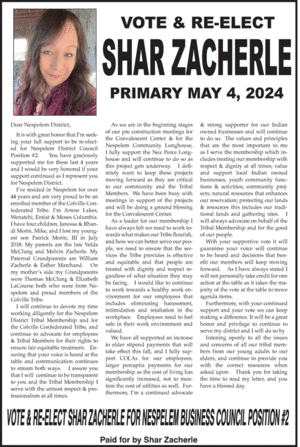A prescription for value-based care
Guest Column
Last updated 9/23/2015 at 10:59am
The U.S. healthcare system is afflicted with a debilitating chronic illness — rising costs. Health spending could top $10,000 a person this year.
Fortunately, there’s a cure. It’s called value-based care, and it represents a fundamental change in how we pay for health care.
Instead of paying healthcare providers for what they do to a patient, value-based care compensates them for how their patients do after they leave the doctor’s office. By emphasizing outcomes instead of inputs, value-based care can improve patient health — and cure our nation’s health-cost disease.
In 2013, U.S. healthcare costs hit $2.9 trillion. Spending is projected to increase 5.7 percent annually through 2023. By then, health costs will account for 19.3 percent of the economy.
That hits consumers in the pocketbook. Employees now pay nearly 37 percent of their own premiums and out-of-pocket costs.
The problem stems from how we pay for care.
Traditionally, providers have been compensated for the number of services they administer. Doctors, hospitals, and the like receive payment even if these services are unhelpful or unnecessary.
Value-based care flips the script by paying providers according to the quality of care, not the quantity.
The government has laid out a vision for transforming our healthcare delivery system according to the principles of value-based care. In January, U.S. Health and Human Services Secretary Sylvia Matthews Burwell announced a historic goal to shift 30 percent of Medicare spending toward value-based care by the end of 2016 — and 50 percent by 2018.
In March, President Obama and Secretary Burwell launched the Health Care Payment Learning and Action Network. This consortium of private payers, providers, employers, states, and consumers is working to accelerate the adoption of alternatives to the conventional fee-for-service model, like value-based care.
Pharmacies can play an important role in achieving the network’s goals.
Consider one of health care’s biggest cost-drivers — the inability of patients to consistently take their prescription medicines. One in two patients fails to adhere to his prescription regimen. That failure exacerbates basic illnesses and ailments. Chronic diseases that could be managed with a pill metastasize into trips to the emergency room.
This lack of prescription adherence costs the healthcare system nearly $300 billion annually. It’s responsible for about 125,000 deaths and 10 percent of all hospitalizations each year.
Pharmacists can address the adherence crisis head on.
Many are teaming up with other health providers to coordinate patient care. As part of my company’s Rite Aid Health Alliance, for instance, our pharmacists and health coaches are partnering with medical providers to help patients with chronic diseases better manage their conditions.
Improving adherence would save money. A one percent increase in prescriptions filled by Medicare beneficiaries would reduce spending by 0.2 percent. That might not seem like much — until considering that Medicare spends nearly $600 billion annually.
Pharmacists can also hasten the shift to value-based care by helping patients avoid getting sick. America’s more than 290,000 pharmacists interact with patients every day. They’re uniquely positioned to deliver preventative care like immunizations and educate patients about making healthier lifestyle choices.
Ninety-three percent of Americans live within five miles of a pharmacy. That places pharmacists in a key position to help folks obtain treatment before their illnesses grow severe.
Because there’s a pharmacy in virtually every community, they’re well-suited to serve as hubs for the delivery of critical social and public-health services.
Pharmacies have expanded their roles and services. In doing so, they’re helping the United States embrace value-based care — which can improve our nation’s fiscal and physical health.
John T. Standley is the CEO and chairman of Rite Aid.


Reader Comments(0)